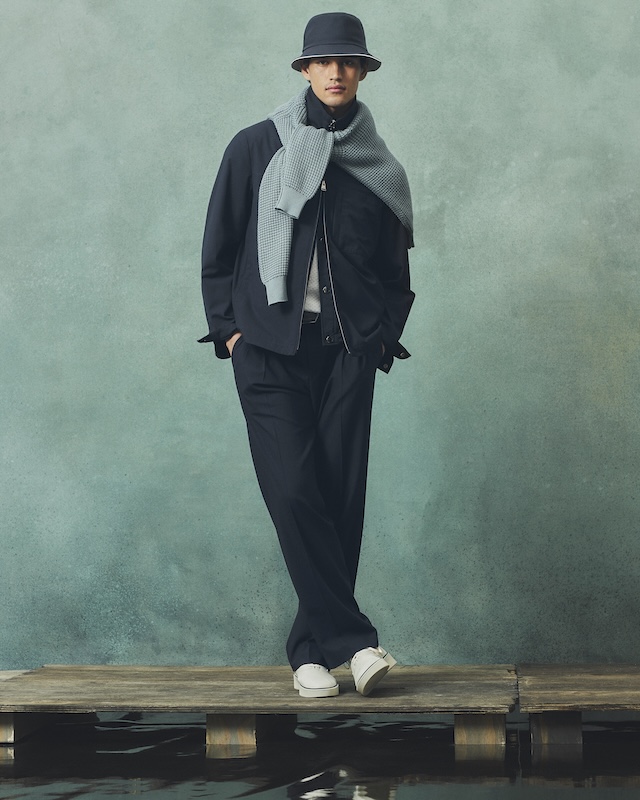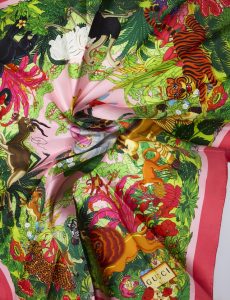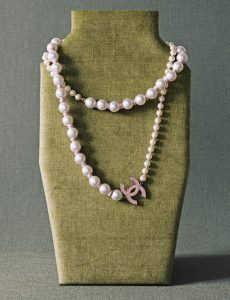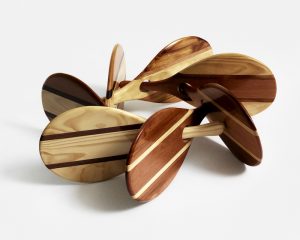For decades, craftsmanship in fashion meant hands, thread and repetition. Today, it also means code. In this interview, CEO Stefano Canali unpacks the future of tailoring, and how the SS25 collection is at one with digital processes

When you think of fashion or, more specifically, the craft behind it, you’ll likely think of a sewing needle and thread – the act of looping through the hole and running the stitch through the fabric. For centuries, this was the foundation of garment making. Slow, tactile and manual. Techniques like hand-tailoring, embroidery, pleating and draping were passed down through ateliers and guilds, rooted in regional tradition and a clear understanding of form. Then as fashion industrialised, the tools changed. Mass production, global supply chains and read-to-wear sped things up and, in doing so, opened a door to new methods of craft built around software, not just a pair of scissors.
3D knitting is one such example. First developed in the 1990s by Japanese firm Shima Seiki and German manufacturer Stoll, the process uses digital programming to produce garments in one piece – no cutting, sewing or producing waste. It gained traction in sportswear, but its breakthrough moment came in 2012 with Nike’s Flyknit trainer, which showcased a seamless upper that reduced material waste by approximately 60%. Since then, designers from Issey Miyake to Stella McCartney have explored this process, using code to manipulate yarns and build sculptural garments. For an industry under pressure to rethink waste, 3D knitting is a more viable alternative that offers fewer offcuts, less energy and garments that are even more precise.
Canali is now applying this approach to its own world of tailoring. Founded in 1934, the Milanese house has built its legacy on soft construction and quiet detailing. With its SS25 collection, Canali is heading on a new path that uses 3D knitting – or what the house is coining as 3D Knit – to engineer garments that echo suiting in their structure, but feel featherlight. Working with long-standing Italian mills, Canali has developed honeycomb bombers, ribbed jackets and woven-effect polos, all of which carry the language of tailoring that’s recast through fibre and code. Below, Stefano Canali, president and CEO, explains how this technique is shaping the next chapter for the house.

Can you explain what 3D Knit is, and how it differs from traditional knitwear techniques?
This season, what we call 3D Knit is more than a name – it’s a declaration of intent. It signals a new generation of knitwear: deeply textured, sculptural and versatile by design. Unlike traditional flat knits, these garments are constructed to hold form and structure, integrating volume, relief and pattern directly into the creation process.
What inspired Canali to explore this method, and why now?
We began this journey in SS24 with the clear goal of transforming knitwear into a house signature. The inspiration came from our desire to evolve the codes of classic menswear by applying research, technique and contemporary relevance to what was once considered casual or informal.
The world has changed and so have the expectations of modern men. They seek softness, functionality, and refinement without compromise. For us, this was the natural moment to reinterpret something traditional with a fresh, elevated lens.
What does introducing this new knitwear language add to Canali’s atelier and its legacy of craft?
It adds depth to our craftsmanship – literally and metaphorically. This evolution of knitwear challenges our atelier to translate sartorial rigour into new materials and processes. And in doing so, it reaffirms what Canali has always stood for: innovation without disruption.
We treat knitwear as a true sartorial medium – capable of elegance, innovation and sophistication. It’s where heritage and technology meet to create something distinctly Canali: garments that are engineered with precision yet feel entirely effortless. We’re not replacing tailoring – we’re expanding it. This is craftsmanship 2.0: where the precision of digital programming meets the emotion of hand-finishing.

Could you describe the process behind creating one of these garments – from idea to final piece?
It starts with the design team envisioning the graphic or structural effect they want to achieve, be it a honeycomb, a sculpted rib or a woven-like texture. This vision is then translated into dialogue with our trusted Italian knitwear mills we’ve partnered with for over 15 years. Together, we begin the “stitch trial” phase, where different yarns, gauges and knitting programs are tested to bring the idea to life. This experimental stage is crucial.
Through it, we refine not just the visual texture, but also the weight, hand feel and performance of the garment. We often use custom yarns. It’s a process that reflects our broader philosophy – where heritage techniques are not replaced by technology but reimagined through it. And it’s this creative alchemy that makes each knitwear piece unmistakably Canali.
Are there any tools, technologies or skills unique to this technique that your team had to master?
Yes, and mastering them has been part of a multi-season journey. Our artisans, long accustomed to traditional techniques, embraced a new way of working – learning to interpret digital patterns, program complex structures and manipulate yarns with millimetric precision. This required new technology, certainly, but also a mindset shift: to see knitwear not as simple or soft, but as sculptural, architectural – even tailored. That perspective is what makes the difference.
Can you give an example of a specific SS25 piece where this new approach to knitwear truly transformed the result?
Absolutely. The standout this season is our tricot bomber jacket crafted in a refined honeycomb structure – a piece that captures the full spirit of this knitwear evolution. What makes it truly special is the extremely sophisticated handmade allure I was describing, in very contemporary shape. It’s a revival of craft through technology, without losing its artisanal soul. The yarn is equally special: a cotton-encased polyamide filament, known as “filato ingabbiato”, that provides structure and volume without heaviness. This dual composition means that while the outer feel is natural and breathable, the internal core gives it shape and resilience.

How do you see this direction shaping the future of Canali’s design language?
This is just the beginning. Knitwear is no longer a complementary element, but a foundational pillar of our collections. It allows us to explore new silhouettes, offer greater versatility, and speak to a broader spectrum of lifestyles. As we continue to innovate, you’ll see this language evolve further – into outerwear, layering pieces and more. But always with our signature: precision, elegance and discretion. This is not a seasonal experiment. It’s a long-term vision for how men will dress.
Finally, what broader role do innovations like this play in the evolution of luxury menswear today?
In a world where luxury must be both meaningful and modern, innovation plays a crucial role. Today’s clients expect more: more comfort, more consciousness, more individuality. And knitwear – when done with thought and expertise – can answer all three. With seamless construction, reduced waste and localised production, our approach reflects not just aesthetic refinement but ethical responsibility. This is not about novelty. It’s about evolving with integrity.






